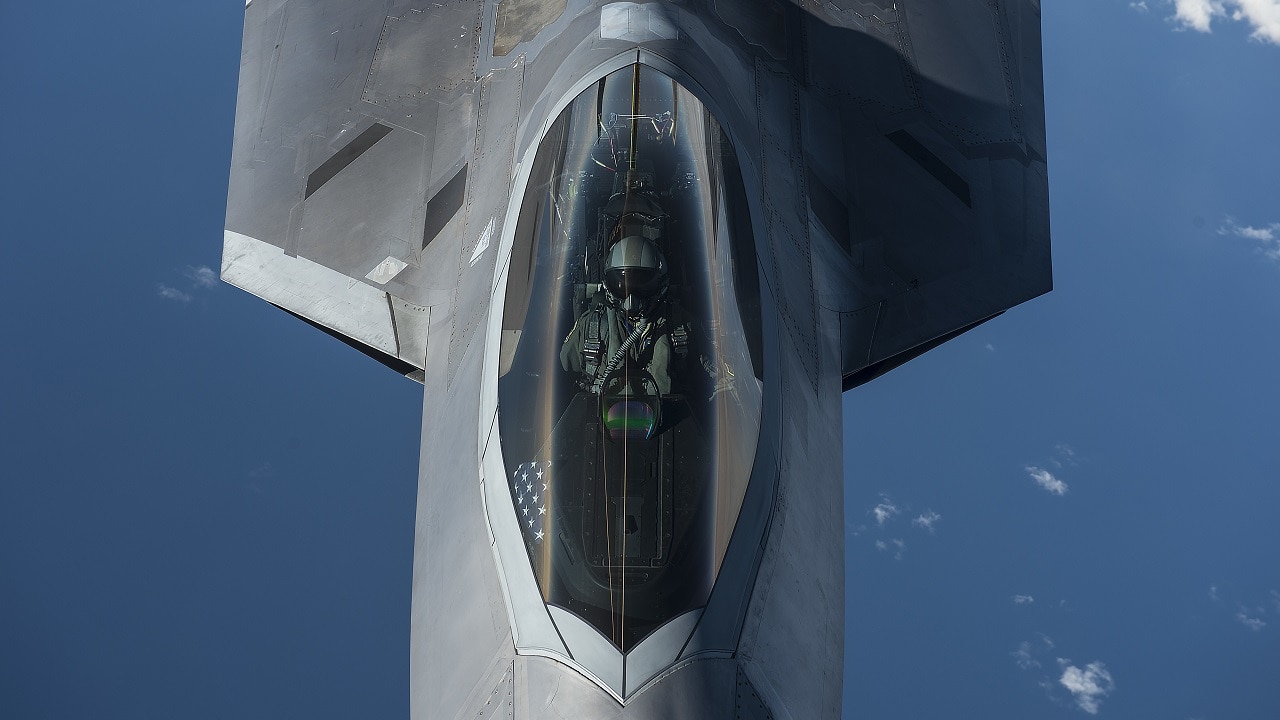The Lockheed Martin F-22 Raptor was the world’s first operational stealth fighter, and ushered in a new era of fighter jets we commonly know today as the “5th generation.” As the first aircraft in this new fighter generation, much of what we commonly consider requirements for a “5th gen” fighter is derived from capabilities the F-22 first brought to the table.
The F-22 Raptor was the first fighter ever designed with an emphasis on stealth and low observability right from the start. While 4th generation fighters like the F-15 Eagle, F-16 Fighting Falcon, and F/A-18 Super Hornet all employ some measures to reduce their radar signature, stealth is an intrinsic part of the F-22’s design. But it’s not just about being sneaky–the F-22 can also fly at speeds in excess of Mach 2.25 and execute incredibly acrobatic maneuvers–thanks to its thrust vectoring capabilities. It can also sustain supersonic speeds without the use of its afterburner; which is one talent found in the F-22 that can’t be found in any other stealth fighter in the world.
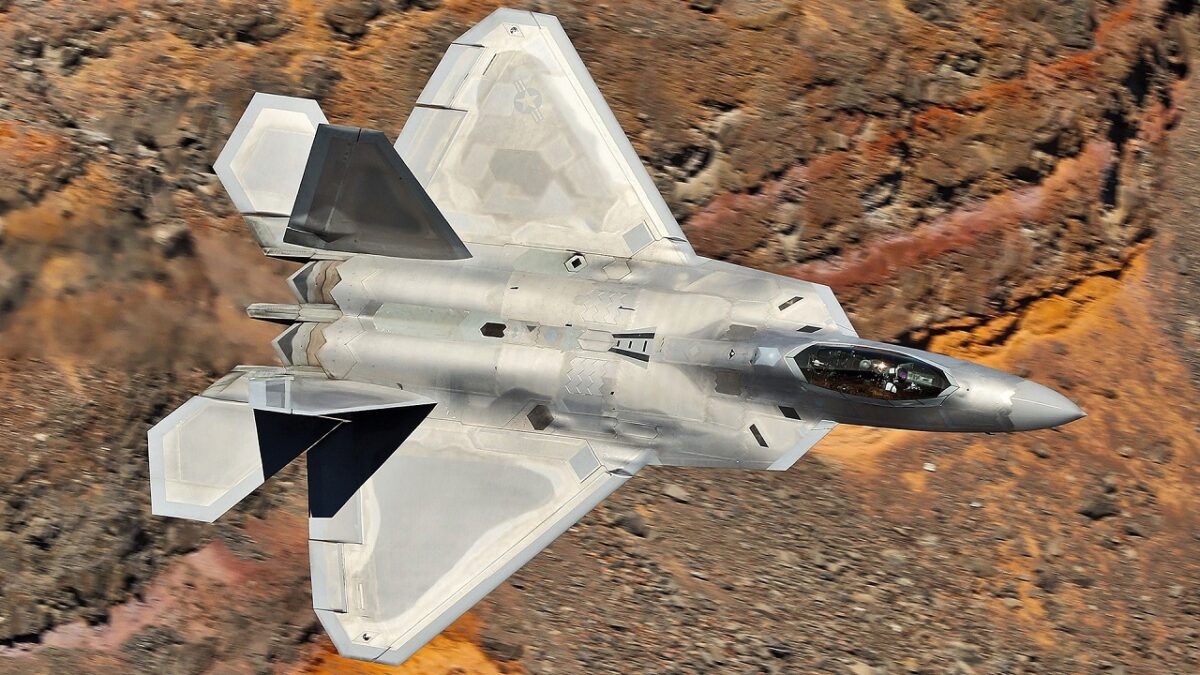
F-22 Raptor. Image Credit: Creative Commons.
The F-22 is slated to be replaced by the NGAD fighter
It seems very likely that the F-22 Raptor may retire without ever firing a shot in anger at an enemy aircraft, which may sound like a failure when discussing high-dollar weapon systems, but could really be seen as an empirical victory. Advanced systems like the F-22 Raptor are intended to serve as deterrents for would-be competitors. Victory for the F-22, in that regard, wouldn’t be racking up kills in the skies over World War III, but rather, playing a role in preventing the outbreak of such a war, to begin with.
The next fighter the Air Force will task with establishing dogfighting dominance, under development within the NGAD program, is expected to build upon the Raptor’s edge over its competition, yielding not one aircraft, but rather a system of them purpose-built to retain America’s air superiority crown. NGAD is expected to consist of an advanced piloted stealth fighter as well as a constellation of uncrewed drones, or unmanned combat aerial vehicles, that will use artificial intelligence to take their cues from the pilot. These drones will extend the aircraft’s sensor reach, offer increased and modular payloads, and even protect the piloted aircraft from attack.
F-22 Raptor specs
(All specifications provided by the U.S. Air Force)
General characteristics
Primary function: air dominance, multi-role fighter
Contractor: Lockheed-Martin, Boeing
Power plant: two Pratt & Whitney F119-PW-100 turbofan engines with afterburners and two-dimensional thrust vectoring nozzles.
Thrust: 35,000-pound class (each engine)
Wingspan: 44 feet, 6 inches (13.6 meters)
Length: 62 feet, 1 inch (18.9 meters)
Height: 16 feet, 8 inches (5.1 meters)
Weight: 43,340 pounds (19,700 kilograms)
Maximum takeoff weight: 83,500 pounds (38,000 kilograms)
Fuel capacity: internal: 18,000 pounds (8,200 kilograms); with 2 external wing fuel tanks: 26,000 pounds (11,900 kilograms)
Payload: same as armament air-to-air or air-to-ground loadouts; with or without two external wing fuel tanks.
Speed: Mach two class with supercruise capability
Range: more than 1,850 miles ferry range with two external wing fuel tanks (1,600 nautical miles)
Ceiling: above 50,000 feet (15 kilometers)
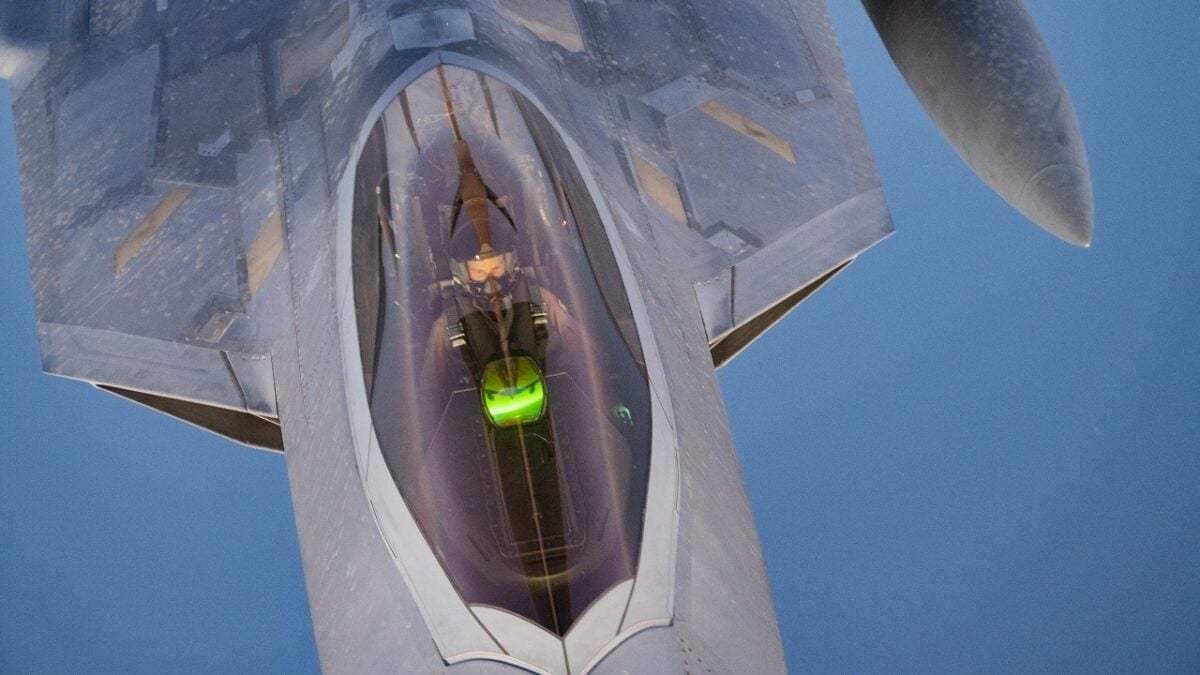
A U.S. Air Force F-22 Raptor receives fuel from a U.S. Air Force KC-135 Stratotanker assigned to the 340th Expeditionary Air Refueling Squadron, above the U.S. Central Command area of responsibility, March 14, 2022. The F-22 Raptor is a fifth-generation aircraft that combines stealth, supercruise, maneuverability, integrated avionics, and is designed to project air dominance, rapidly and at great distances, and deter regional aggressors while deployed in the USCENTCOM AOR. (U.S. Air Force photo by Staff Sgt. Frank Rohrig)
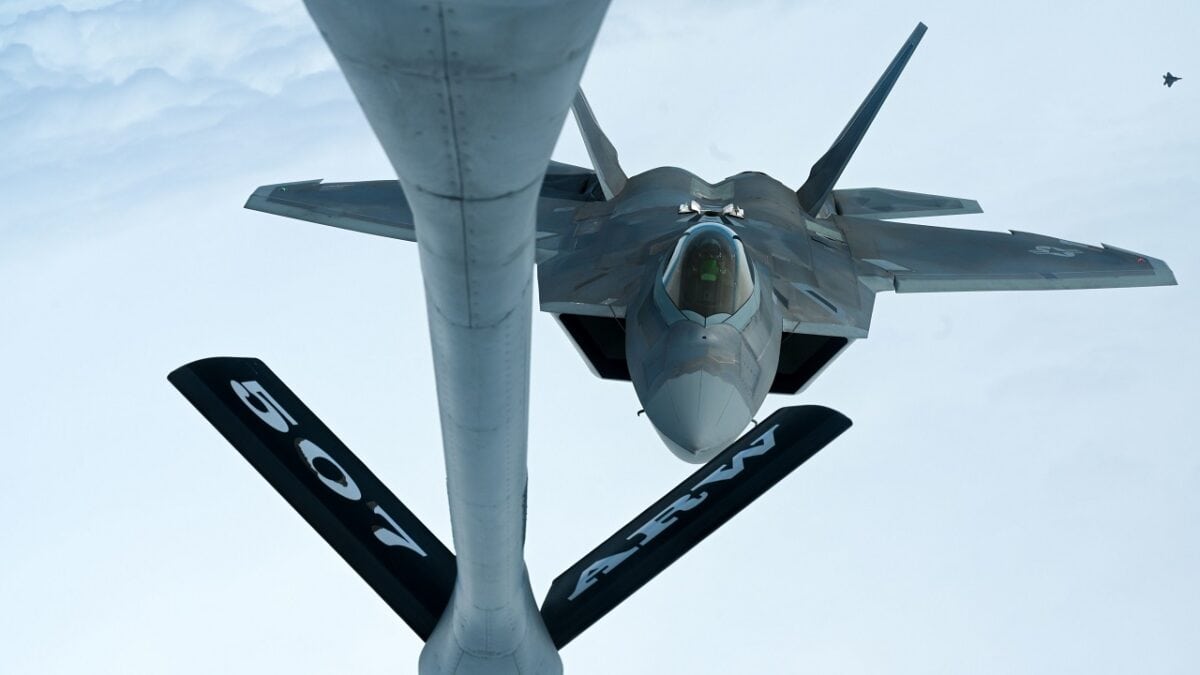
Eight F-22 Raptors with the 325th Fighter Wing at Tyndall Air Force Base, Florida, receive fuel from a KC-135 Stratotanker from the 507th Air Refueling Wing from Tinker Air Force Base, Oklahoma, Feb. 7, 2022, while the Okies flew to the U.S. Virgin Islands for training. (U.S. Air Force photo by Lauren Kelly)
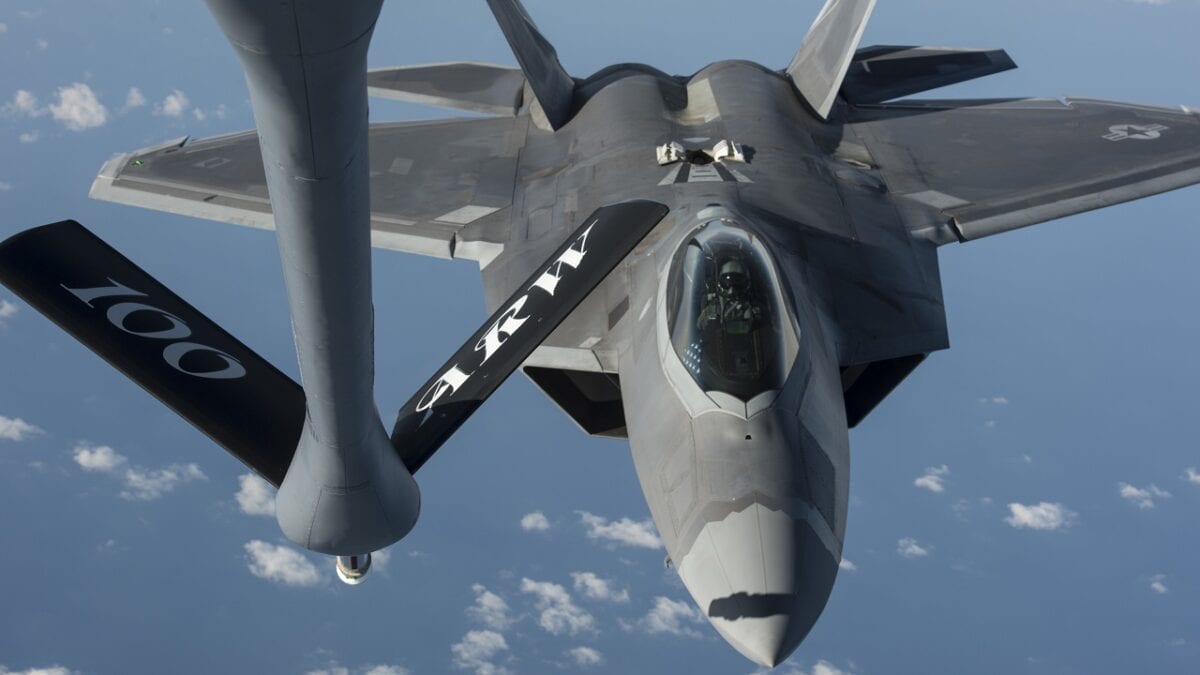
A U.S. Air Force F-22 Raptor from the 95th Fighter Squadron, Tyndall Air Force Base, Fla., moves into position behind a KC-135 Stratotanker from the 100th Air Refueling Wing, RAF Mildenhall Air Base, England, to conduct aerial refueling Sept. 4, 2015, over the Baltic Sea. The U.S. Air Force has deployed four F-22 Raptors, one C-17 Globemaster III, approximately 60 Airmen and associated equipment to Spangdahlem Air Base, Germany. While these aircraft and Airmen are in Europe, they will conduct air training with other Europe-based aircraft. (U.S. Air Force photo by Tech. Sgt. Jason Robertson/Released)
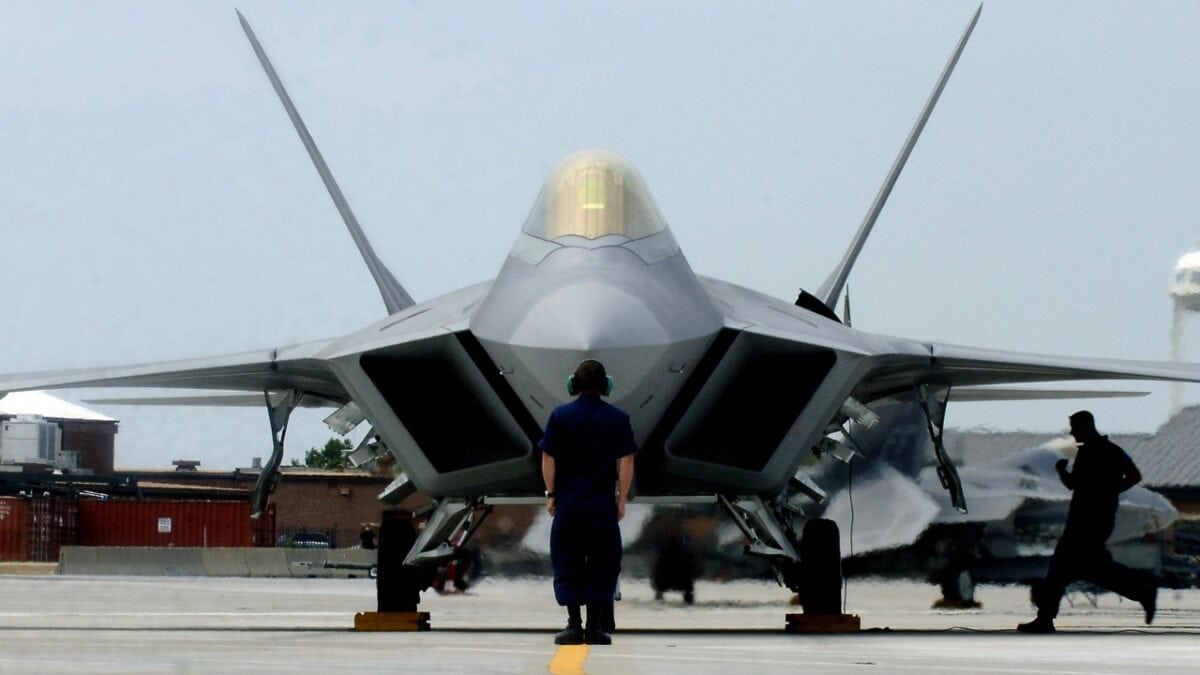
F-22 A Raptor Demonstration Team aircraft maintainers prepare to launch out Maj. Paul “Max” Moga, the first F-22A Raptor demonstration team pilot, July 13. (U.S. Air Force photo/Senior Airman Christopher L. Ingersoll)
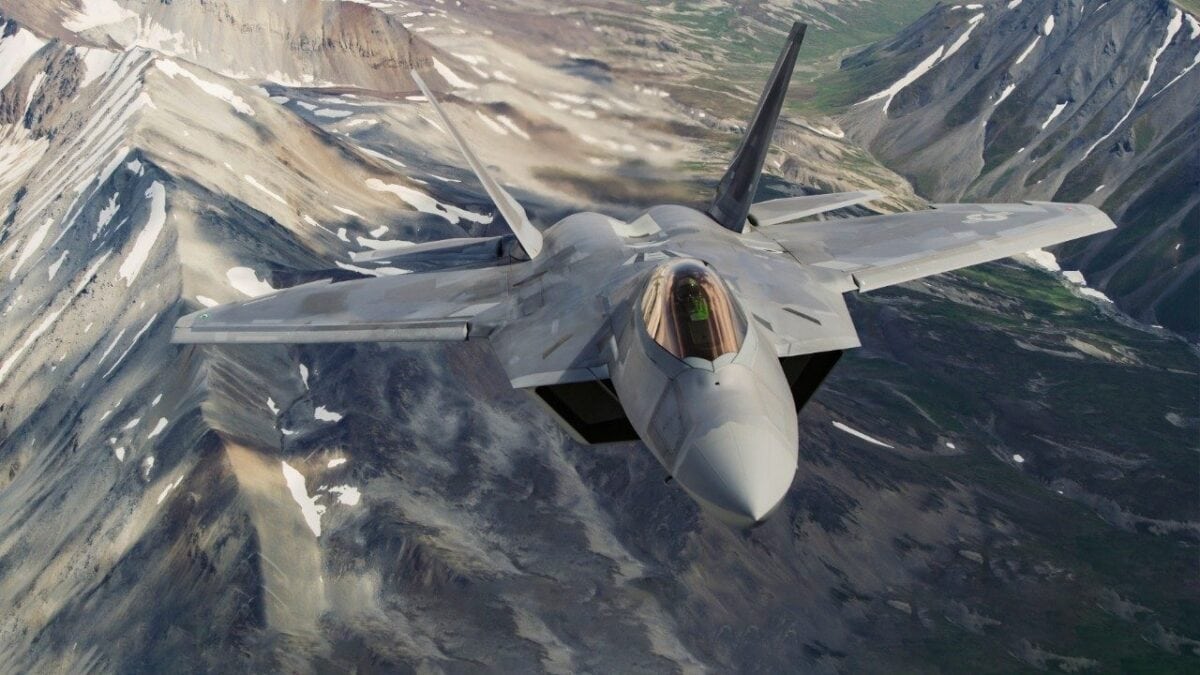
F-22 Raptor. Image Credit: Creative Commons.
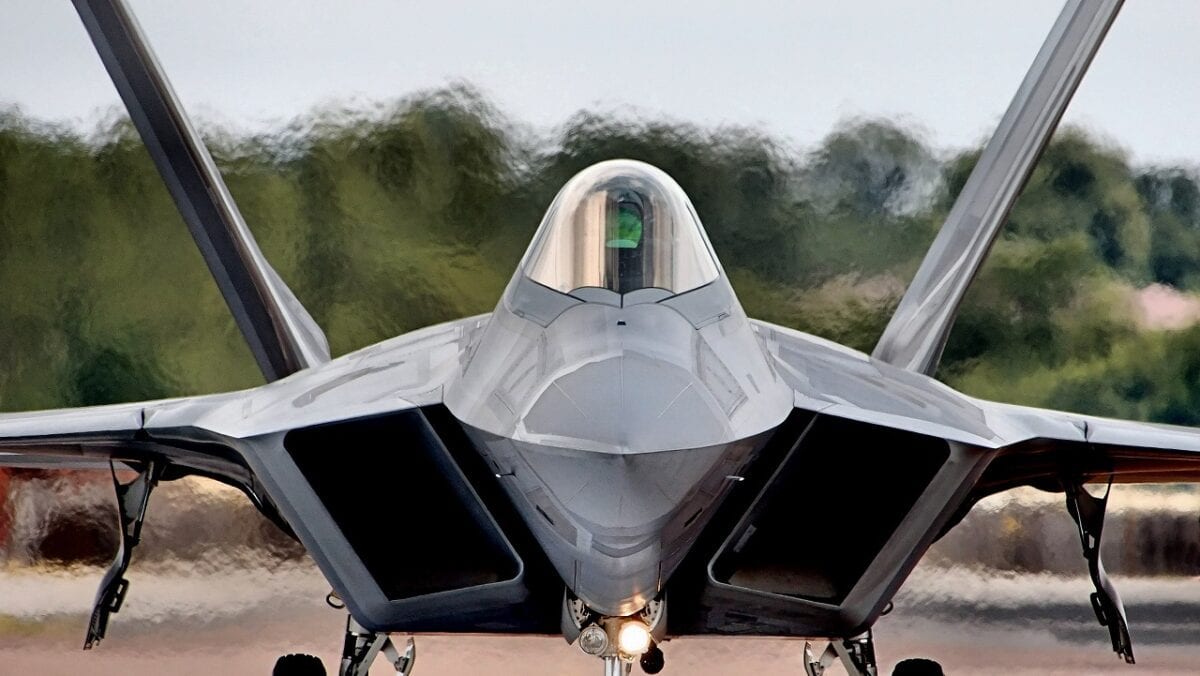
F-22 Raptor. Image Credit: Creative Commons.
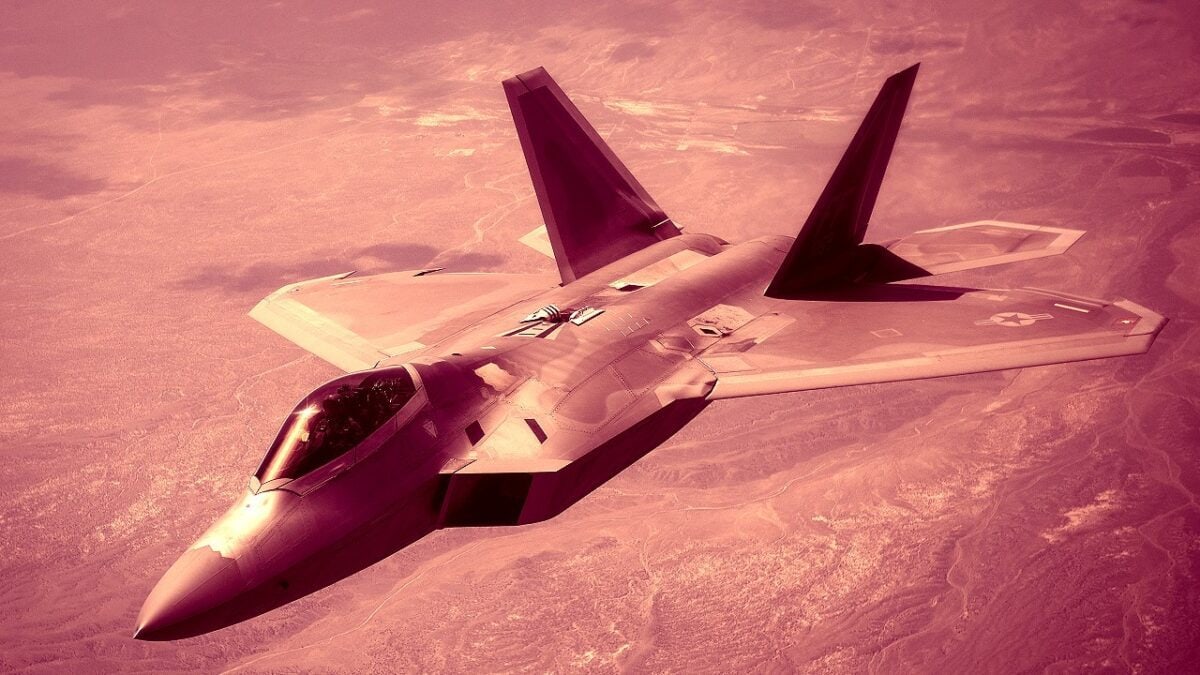
F-22 Raptor. Image Credit: Creative Commons.
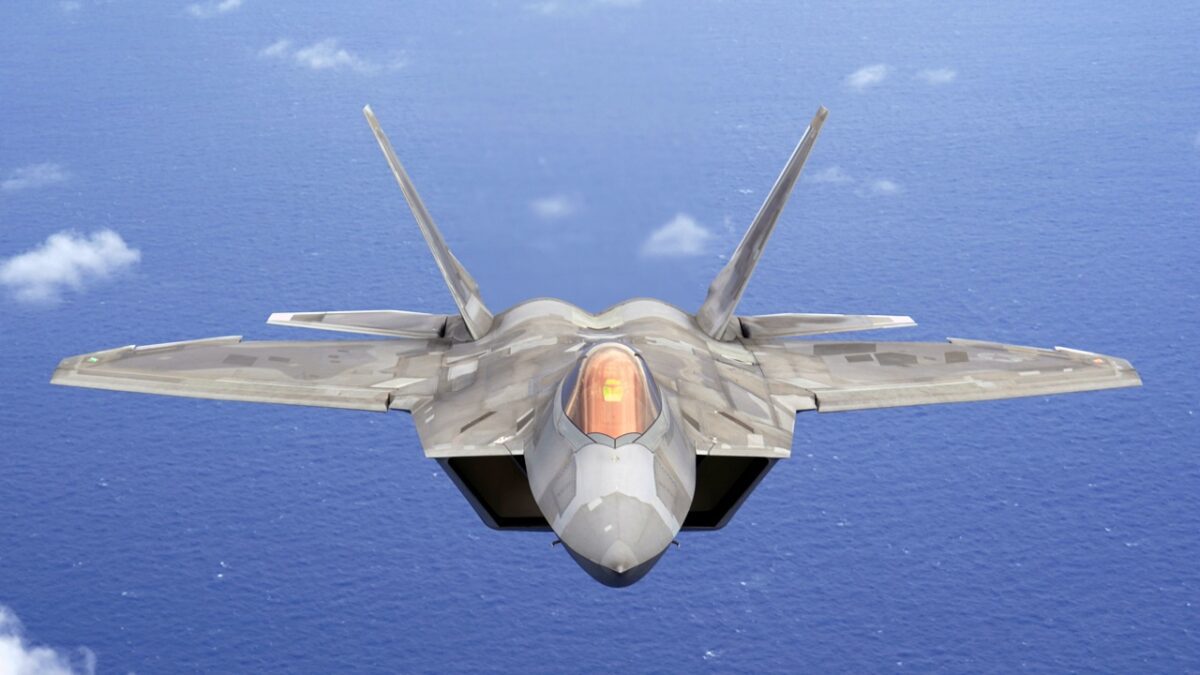
F-22 Hawaiian Raptor flies over Joint Base Pearl Harbor-Hickam, Hawaii, Dec. 5, 2019.
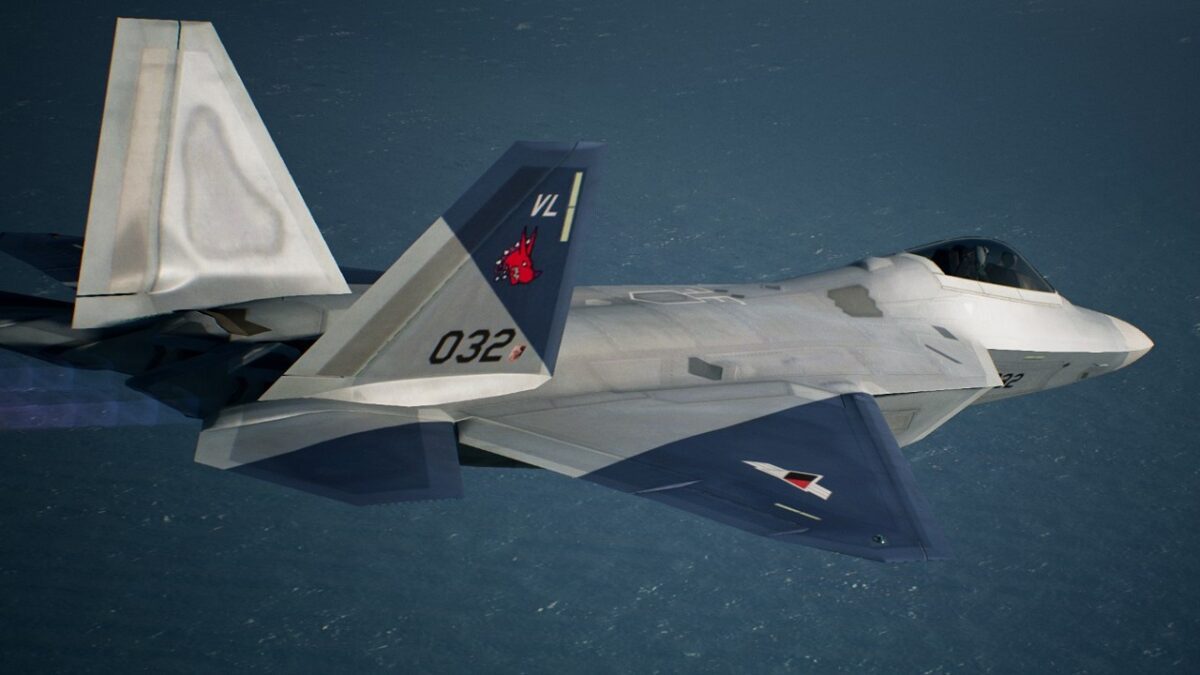
FB-22 Stealth Bomber? Image is of an F-22 Raptor. Image Credit: Creative Commons.
Armament:
- One M61A2 20-millimeter cannon with 480 rounds
- Internal side weapon bays carriage of two AIM-9 infrared (heat seeking) air-to-air missiles
- Internal main weapon bays carriage of six AIM-120 radar-guided air-to-air missiles (air-to-air loadout) or two 1,000-pound GBU-32 JDAMs and two AIM-120 radar-guided air-to-air missiles (air-to-ground loadout)
Crew: one
Unit cost: $143 million
Initial operating capability: December 2005
Inventory: total force, 183
(Current as of August 2022)
You can learn more about the F-22 Raptor on the Air Force fact sheet here.
Feature image: Created by author using U.S. Air Force and Adobe assets)

